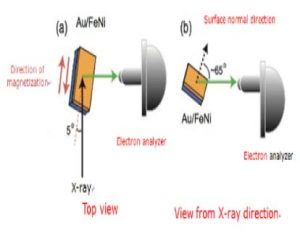
Researchers at Tohoku University and the Synchrotron X-ray Station say they have successfully detected spin-resolved electronic states from a buried ferromagnetic layer, which had been difficult to detect using conventional spin-resolved photoemission spectroscopy. This discovery is important in the development of electronic devices.
The research team used a high-brilliant hard X-ray generated by the third generation synchrotron radiation facility, SPring-8, to measure the spin-resolved electronic states in a buried ferromagnetic layer. SPring-8 was used since hard X-ray photoemission spectroscopy is known to be able to measure the electronic states from buried layers. Researchers also invented a new approach for electron spin detection method, which was combined with hard X-ray photoemission spectroscopy, greatly improving the detection efficiency.
The new technique enables the direct observation of spin-resolved electronic states of ferromagnetic materials near the interface between the ferromagnetic and nonmagnetic layers and will contribute to improvement in the performance of devices containing ferromagnetic materials. It will also allow the development of new spintronics materials through a comparison between the performance of spintronics devices and spin-resolved electronics states in ferromagnetic materials in the vicinity of the interface between the ferromagnetic and nonmagnetic layers.






